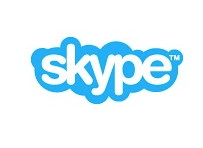There is some change at Skype, the messaging giant that is now a part of Microsoft: Jonathan Rosenberg, the chief technology strategist, and then later GM of product strategy and research at Microsoft who was behind the creation of Skype’s Facebook video calling feature and other developments, has left the company to become a VP and CTO of cloud collaboration for Cisco — the company from which Skype had poached him in 2009 partly to build out its enterprise business.
The news was first brought to light by Andy Abramson, and it is also spelled out in Rosenberg’s LinkedIn profile, which notes that he joined Cisco at some point in February. We have reached out to both Skype and Cisco for comment, as well as Rosenberg himself.
Rosenberg brought a crucial mix of technical expertise and product implementation to Skype, which took tech beyond the lab and into the mainstream. “He wasn’t just thinking of technology, but how to integrate and make it a part of an ecosystem,” a source says.
As one of the main people behind Skype’s video-calling service with Facebook, Rosenberg helped secure the deal, develop the architecture and APIs and build the launch plan. He also was behind Skype’s Windows 8 client, and developed the strategy behind Skype’s webRTC plans, a role he also forged through work with the IETF, which is still ongoing.
He is described by Abramson in his blog post as the “father of SIP,” a protocol used for voice and video calls over IP. It is not the basis of Skype but it is a widely-used protocol in enterprise networks as well as by VoIP service providers like Google Voice and Vonage. Skype has at times offered support for SIP, however, via Skype Connect. There may have even been a time when Rosenberg would have worked on something deeper had patent fights gone another way. (They didn’t in the end.)
Rosenberg’s move comes in the wake of other senior departures. These have included Brian O’Shaughnessy, who had been global head of communications from January 2009 to December 2012; and Edmund Read, who had been an executive out of Luxembourg until he left in January 2013 to join Just-Eat. Going a bit further back, Jonathan Christensen, who had been with Skype for nearly six years, most recently as VP of emerging opportunities, left the company in January 2012 and is now working on something in stealth mode; and Jason Fischl — who had been, like Rosenberg, an expert in SIP — left as director of developer relations in December 2011.
While the companies have not given any reason for Rosenberg’s move, our source notes that it comes at a time of other changes, as Microsoft is bringing Skype closer to its existing product lines. On the enterprise side, there is its Lync enterprise-focused unified communications suite. And on the consumer side, it has consolidated Skype with Messenger with the aim of bringing more users together for more targeted services, including advertising. On the architecture side, we have heard that Microsoft has been migrating Skype to its server farms — and away from the original concept behind the peer-to-peer network, which made each Skype user into a “supernode.”
Abramson, who describes the departures (perhaps a little dramatically) as “mutiny,” notes that this may not be good news for Tony Bates, the head of Skype who has been working closely with Redmond since the $8.5 billion acquisition. “Part of Bates’ agreement and compensation package reportedly includes an executive retnetion [sic] clause,” he writes. Some have tipped Bates as a possible successor to current Microsoft CEO Steve Ballmer.
Update: Cisco provided TechCrunch with the following statement from Rosenberg about what he will be doing.
“I started at Cisco on February 18 as VP and CTO of Cloud Collaboration, which covers all of Cisco’s cloud-based communications and collaboration offerings. This includes WebEx, Jabber, hosted Telepresence, and similar products. In my role, I’ll own the end-to-end architecture for Cisco’s collaboration in the cloud offerings, as well as provide visionary and directional thinking around future products, technologies and services. I’ll provide out-of-the-box thinking to take already-successful cloud products (WebEx is arguably the most successful cloud-based collaboration product in the marketplace and was there long before SaaS entered our industry vocabulary), and take them much farther. Cisco has the market leading position in enterprise Unified Communications, enormous ability to maximize the use of the network in delivery of products and services, and a real commitment to cloud services that was demonstrated to me in conversations with leadership up and down the management chain. I felt it was an opportunity I could not refuse. I’m really excited to be back – it’s like a homecoming – and am looking forward to helping Cisco accomplish great things.”
